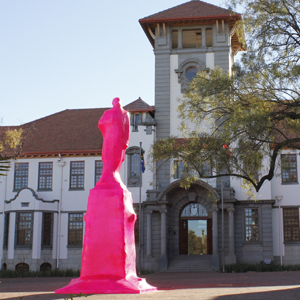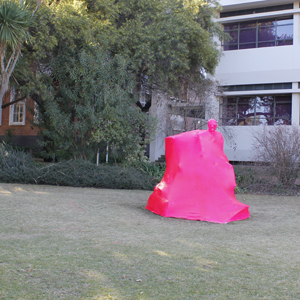Latest News Archive
Please select Category, Year, and then Month to display items
12 January 2024
|
Story Nonsindiswe Qwabe
|
Photo Sonia Small
 Since joining the UFS in 2008, Dr Grey Magaiza has worked extensively on approaches that can foster the socio-economic transformation of societies.
Since joining the UFS in 2008, Dr Grey Magaiza has worked extensively on approaches that can foster the socio-economic transformation of societies.
“The future should be one where communities can decide on their development agenda and futures. That’s the most important for me.” Dr Grey Magaiza, Deputy Director of the Centre for Gender and Africa Studies (CGAS) and Head of the Community Development programme on the Qwaqwa Campus, is passionate about capacitating communities to be agents of change and advancement. His vision for the future emphasises the empowerment of communities to take charge of their development by actively participating in decision making and the implementation of development projects that can improve their lives.
Since joining the UFS in 2008, Dr Magaiza has worked extensively on approaches that can foster the socio-economic transformation of societies. Over the years, he has crafted his research speciality into one that he is most proud of – being an interdisciplinary scientist immersed in the development of communities.
“I’m in a fortunate position of researching what I like. I say ‘fortunate’, because I’ve taken the time to understand what I’m passionate about, which is the overall field of rural livelihoods and livelihood futures – in short, community development. My research starts from an engaged university, understanding the elements that a university must use to enhance transformation and relevance to its immediate community in terms of development.”
One of the ways he has done this is by looking at social entrepreneurship as a development approach for young people in a rural setting. Through workshops with non-profit and civic organisations in Qwaqwa, Dr Magaiza has been helping these organisations to map out their needs and actively meet them through the involvement and support of external role players.
“We understand that communities are part of the national development agenda, but even that national agenda respects community knowledge and intentions and allows communities to shape their identity. A critical enabler of this is community organising. You bring back the capacity in communities to have dialogues on issues affecting them as spaces for engagement, knowledge exchange, and for people to just talk about their way forward.”
By enabling communities to define their development agenda, they can address their specific needs, challenges, and aspirations, he said. “When I look at livelihood futures, it’s quite an exciting aspect of my work – it’s like looking into a fortune tellers’ globe, because you’re not deciding for communities what they should do, but the communities themselves take those decisions.”
Pres Steyn turns pink in anticipation of Vryfees
2014-06-06
Video clipLive streaming  |
Australian artist Cigdem Aydemir vacuum packed the Pres Steyn monument on the Bloemfontein Campus’s Red Plain – in pink. Aydemir’s project, ‘Plastic Histories’, forms part of a public art project that encourages us to evaluate public monuments in their historical context.
By vacuum packing monuments, Aydemir alludes to their significance and preservation. At the same time, though, it reveals the nature of their contentious and gendered historical function. This is because most monuments in post-colonial countries typically celebrate men’s achievements in serving their nations.
In response, this project acknowledges the contribution of women from all races, communities and sexual orientations to the grand narrative of a post-apartheid South Africa.
Aydemir is also developing an app in collaboration with Australian artist Warren Armstrong. This will be used for augmented reality viewing of three city monuments – those of President Brand, General De Wet and General Hertzog. This means that visitors will be able to hold a smart phone or iPad in front of the monuments and view the monuments as if vacuum packed in pink plastic.
In conjunction with the public art project there will be an exhibition of digitally manipulated photographs of nineteen-century and contemporary male monuments in Bloemfontein. These photos will be exhibited at the Johannes Stegmann Gallery at the UFS Sasol Library from 15 July – 1 August 2014.
Public tours on the Bloemfontein Campus and into the city will take place on:
• Tuesday 15 July at 11:00,
• Wednesday 16 July at 14:00, and
• Saturday 19 July at 11:00.
 |
Aydemir’s ‘Plastic Histories’ public art project is part of the UFS Programme for Innovation in Artform Development (PIAD) and the Vryfees arts festival’s partnership with the Australian-based SituateArt in Festivals initiative. This partnership is managed by the Salamanca Arts Centre in Tasmania.
Read more articles about this project:
POZIBLE launch (pdf document)
Media release: 17 June 2014: Art Stars Revealed (pdf document)
PIAD/PIKO - http://bit.ly/1gazQTV
OPENLab - http://bit.ly/1hzguUG
CAD Forum - http://bit.ly/1sNvtRB